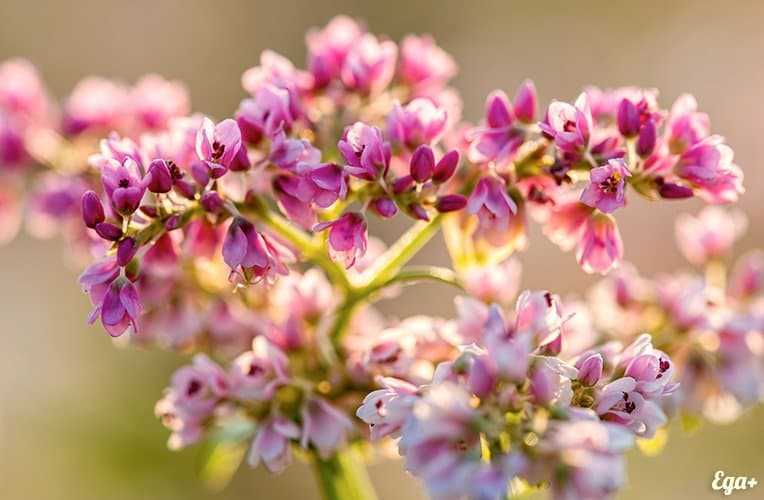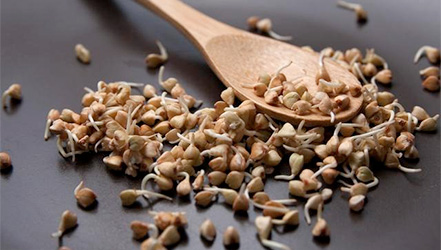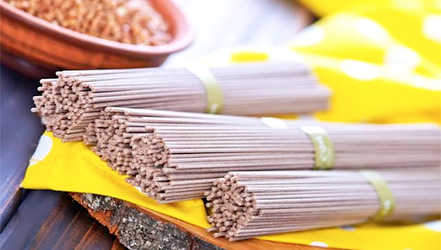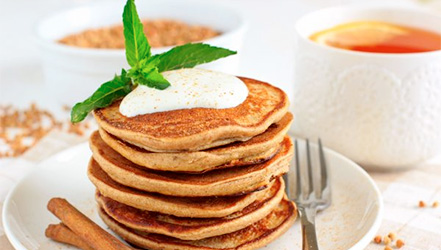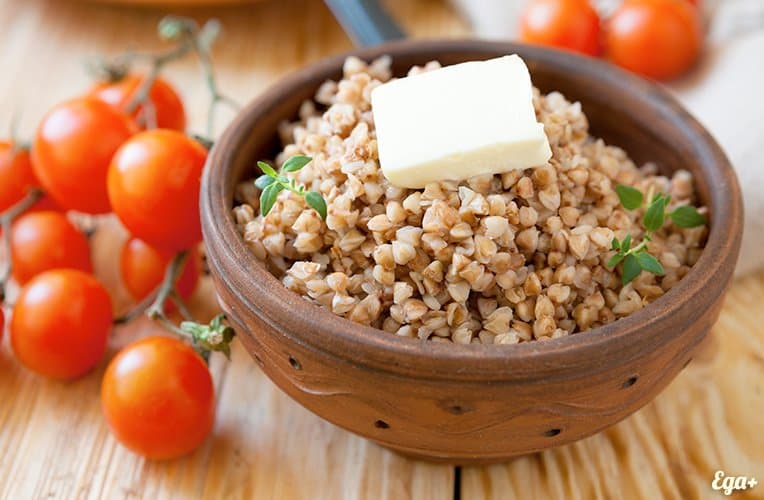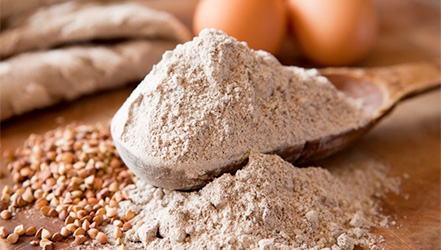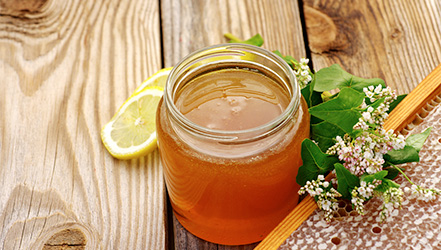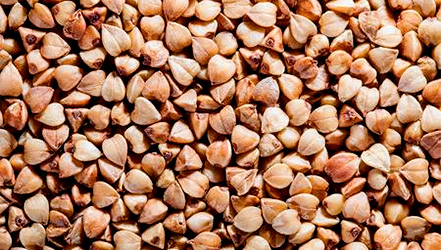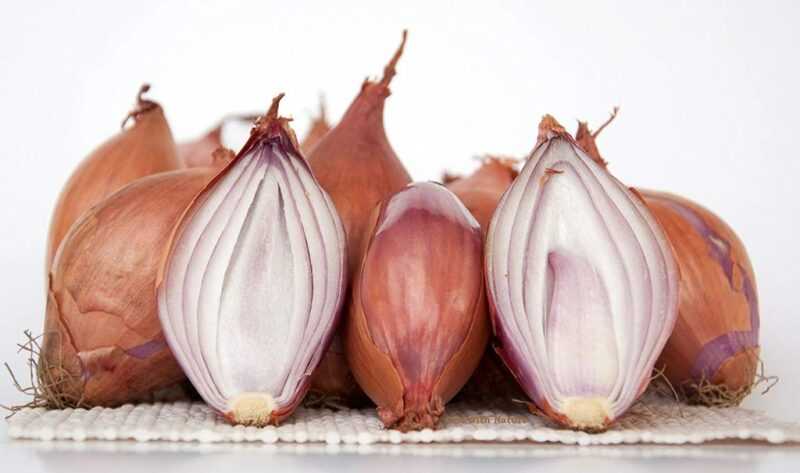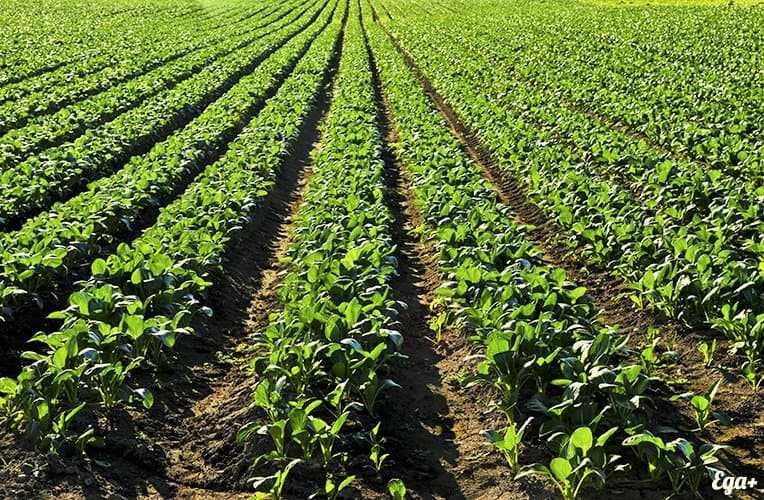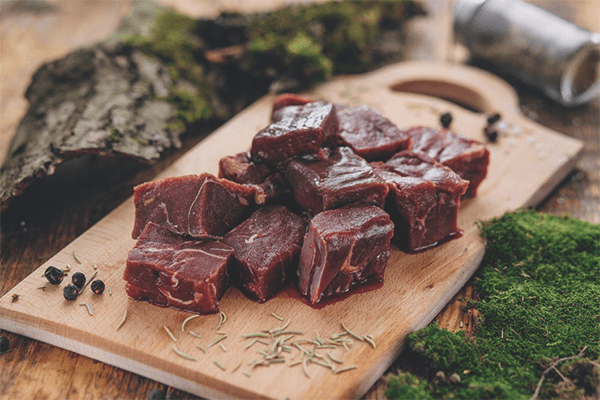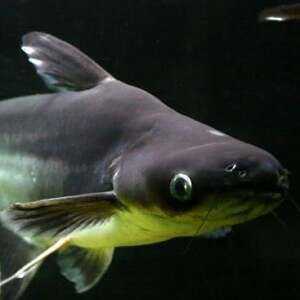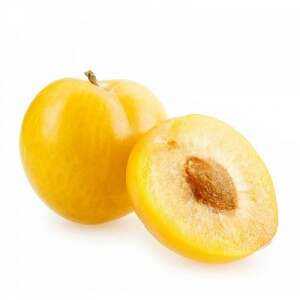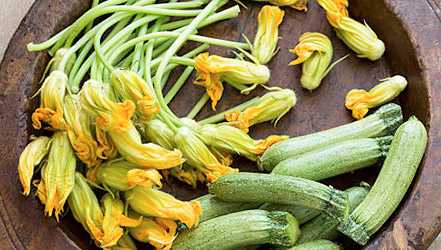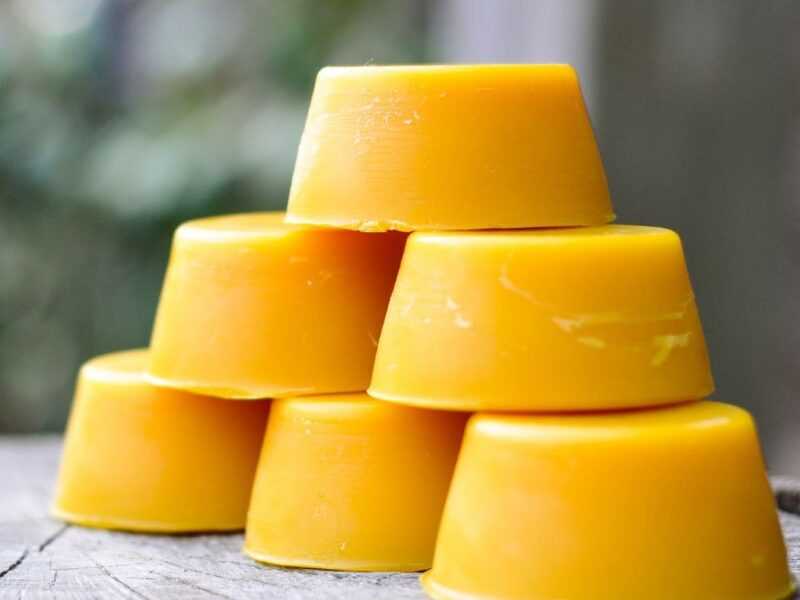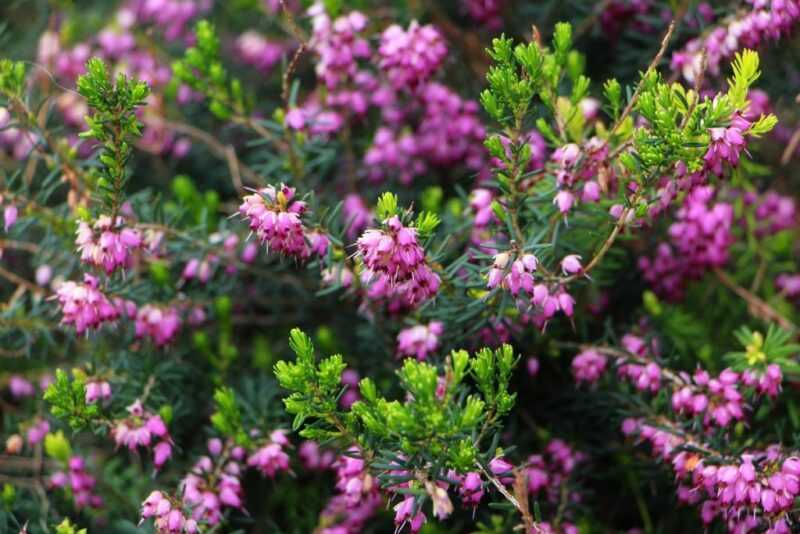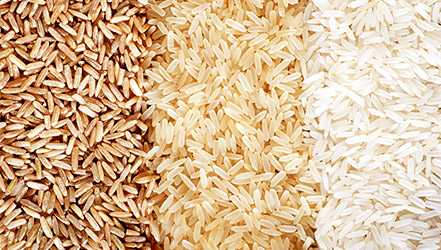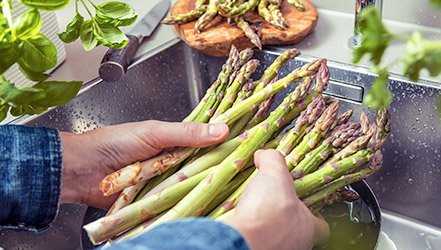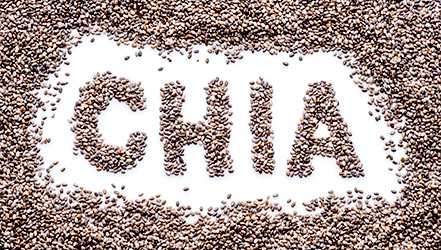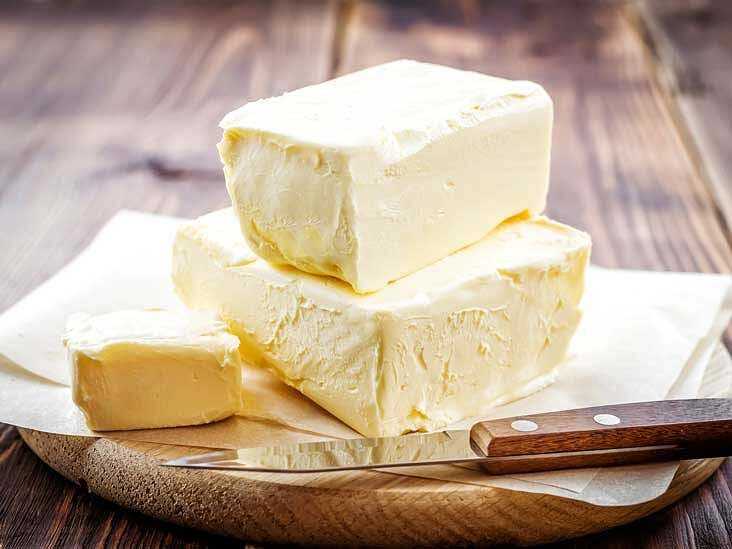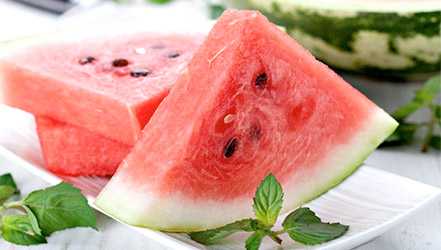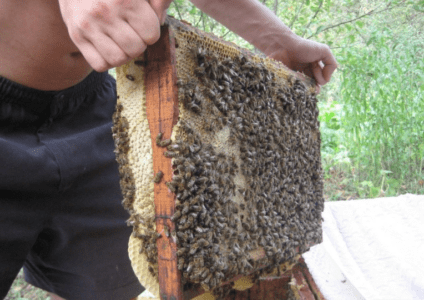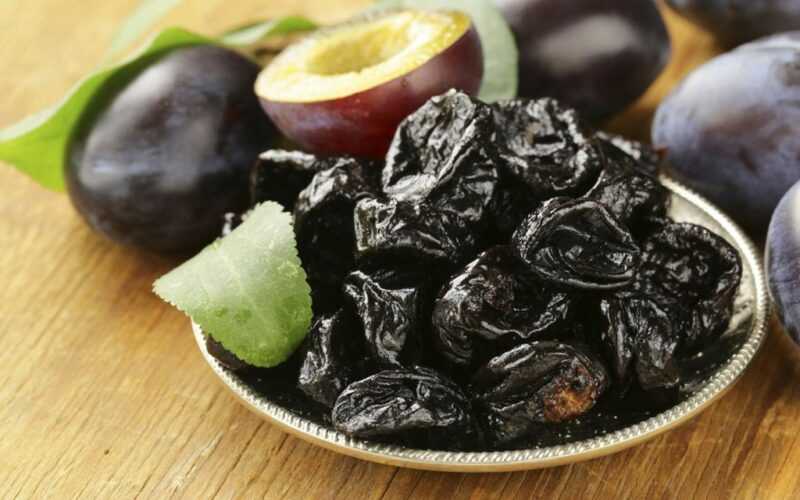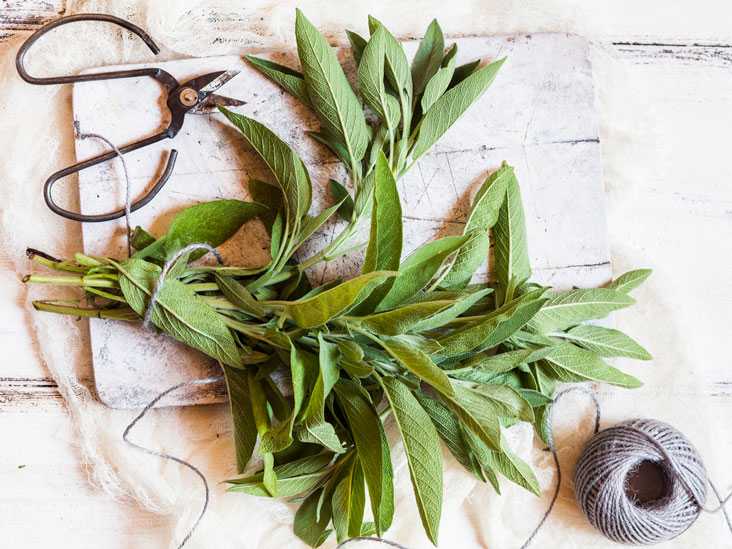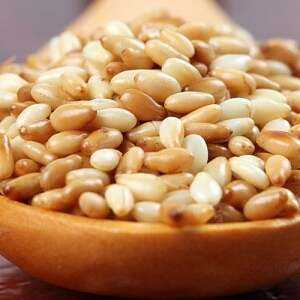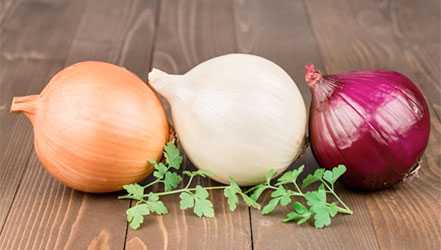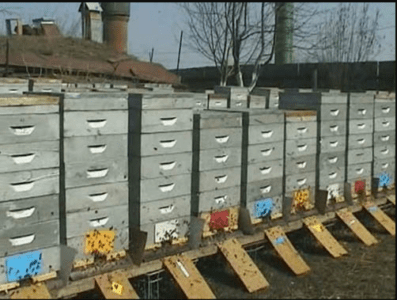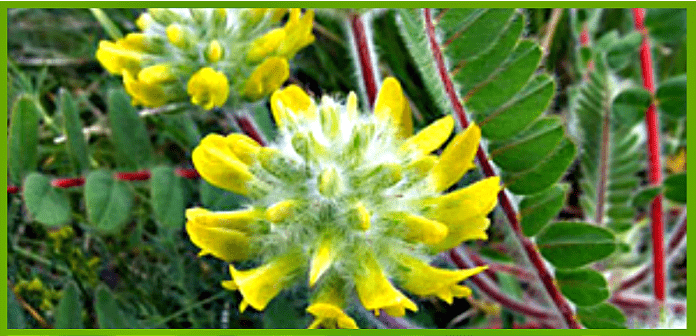Common buckwheat (sowing, edible) – cereal crop
from the family Buckwheat . The name of the genus Buckwheat in Latin
is Fagopýrum. The word “buckwheat” (“buckwheat”, “buckwheat”), according to
one of the generally accepted versions, is an abbreviation for the phrase
” Greek groats “, since presumably the culture
migrated to the Slavs thanks to Greek merchants. Buckwheat belongs
to grain and non-cereal plants (or pseudo-grains). Due to
its prevalence in different parts of the world and countries, and its importance
in the history of culinary, buckwheat (buckwheat fruits, buckwheat grains)
received the status of a truly legendary product. …
Common buckwheat is an annual herb, from 30 to 80 cm tall.
The stem of the plant is ribbed, non-pubescent, branched, painted
in greenish-reddish tones. Leaves also mixed with red,
arrow-triangular shape; the lower ones are long-petiolate, and the upper ones
are sessile. The flowers are white, pink or red, collected in
corymbose inflorescences. The fruit is a triangular nut. Buckwheat blooms
depending on the sowing time, most often in July. …
Useful properties of buckwheat
Composition and calorie content
Carbohydrates
74.95
19.94
62, 22
Dietary fiber
10.3
2.7
2.2
Water
8.41
75.63
Proteins
11.73
3.38
13.33
Fats
2.71
0.62
2.22
Calories (Kcal)
346
92
333
Potassium
320
88
311
Phosphorus
319
70
Magnesium
221
51
Calcium
17
7
67
Sodium
11
4
Iron
2.47
0.8
2
Zinc
2.42
0.61
Vitamin
B3
5.135
0.94
Vitamin
B6
0.353
0.077
Vitamin
B2
0.271
0.039
Vitamin
B1
0.224
0.04
Vitamin
B9
0.042
0.014
Buckwheat contains up to 20% protein (with amino acids such
as lysine
and tryptophan),
up to 80% starch,
sugar – 0.3-0.5%, organic
acids (malic, citric, oxalic, maleic), vitamins
B1 ( thiamine), B2 (riboflavin), P (rutin), PP (nicotinic acid),
anthocyanins, salts of iron, calcium, phosphorus and trace elements – copper,
zinc, boron, iodine, nickel, cobalt. The aboveground part of the plant
during the flowering period contains a flavone glycoside (vitamin) – rutin
(1.9-2.5%). …
Use in medicine
For medicinal purposes, buckwheat seeds and grass are used (flowers
together with apical leaves). The herb (as a pharmaceutical
raw material) is cut at the stage of buckwheat flowering, when the level of
rutin in the plant reaches its maximum amount. The flowers are harvested
for the production of galenic preparations. Raw materials are not available in the pharmacy
assortment.
Buckwheat is a product whose dietary value is difficult to overestimate.
Especially useful is the use of buckwheat dishes for diseases of the
stomach and intestines, for
anemia, disorders of the nervous system, kidney diseases.
Rutin is produced from buckwheat grass, which is used
for the prevention and treatment of
vitamin P hypo- and avitaminosis ; in the treatment of diseases that are accompanied by impaired
vascular permeability (hemorrhagic diathesis, capillarotoxicosis,
retinal hemorrhages, hypertension and radiation sickness,
glomerulonephritis, rheumatism,
septic endocarditis). A number of drugs are produced on the basis of rutin:
urutin, rutamine, askorutin, etc. In folk medicine
flower infusion of buckwheat is drunk when coughing. Thoroughly pounded and
sifted buckwheat leaves are used as a natural powder for
diaper rash in children.
Use in official medicine
For the purpose of prophylaxis (and in the treatment of vitamin
P hypo- and avitaminosis ), Rutinum is prescribed. It is used 2 tablets
2 to 3 times a day. The duration of the course is 5-6 weeks.
Use in folk medicine
- As an expectorant, an infusion
of buckwheat flowers is used (40 g of flower raw materials per liter of boiling water):
drink 200 ml up to 5 times a day. - RџSЂRё dry cough mixture is prepared from buckwheat flowers
(50 g), forest mallow (60 g), wild poppy,
common podbelo and herb of medicinal lungwort (10 g each).
Pour the herbs with a liter of boiling water and let it brew overnight. Take
a glass up to 5 times a day. - For bronchitis,
which is accompanied by a dry, debilitating cough, an infusion is useful:
buckwheat flowers (40 g), common buckwheat,
black elderberry , heart-shaped linden (20 g each), wild poppy flowers,
scepter mullein , forest mallow and herb of medunica medicinal
(30 d) steamed in a liter of boiling water, kept overnight, then
filtered and drunk 50 ml of the drug every hour. … - For arthritis,
polyarthritis, various sclerotic lesions, convulsive
conditions, take an infusion: 4-6 tablespoons of dried leaves,
herbs and buckwheat flowers are steamed in a liter of boiling water. Drink chilled,
up to 4 glasses a day. - RџSЂRё neurasthenia, low blood pressure
with a feeling of weakness, drink the infusion described above, 100 ml up to
4 times a day. - Dry raw buckwheat herbs (crushed tops or leaves
and flowers) are included in the composition of medicinal infusions from herbal mixtures
and are taken for angina,
laryngitis,
neuritis,
pain with sciatica, hepatitis,
obesity.
Outwardly:
- Fresh, washed buckwheat leaves are applied as compresses
to purulent wounds and abscesses. - From a concentrated infusion (2 tablespoons of buckwheat herb
per 200 ml of boiling water), make lotions, compresses for abscesses,
panaritiums, phlegmon,
ulcers. Wipe the scalp with infusion in case of
baldness, treat burns with sterile cotton wool,
prepare an infusion for washing the eyes (for cataracts). …
Use in oriental medicine
An oriental recipe recommends buckwheat in combination with pomegranate
sauce for anemia. Hard grains of buckwheat are used in Indian
and Chinese medicine in therapeutic massage sessions.
In scientific research
Due to its prevalence, useful properties and specificity of
cultivation, buckwheat has become an object of study in both agronomic
and medical research.
In the “Collection of Economic Rules” (1670) F. Udolov said
the following about buckwheat: “it will not be unprofitable if other bread is canceled,
but instead of sowing buckwheat.”
In the “Manual on speculative and clerical agriculture”
(1786), the first Russian manual on agronomy, the scientist M.G. Livanov
wrote about buckwheat: “This grain is
very useful and profitable for different household needs . It disintegrates so much that no
grain of grain can compare with it. “
Founder of Scientific Agronomy. THEM. Komov, in his treatise On
Agriculture (1788), emphasized that “they sow more buckwheat,
use it better, and know it than in all of Europe. Because
there only birds and cattle are fed with it, and we
cook the most nutritious food for humans from it ”. Komov also mentioned the ability of
buckwheat to “drown out” wild, weeds, displacing them from the land.
A century later, the famous Russian agronomist A.N. Engelhardt extolled
buckwheat in his work “Letters from the Village”, where it was said
that “buckwheat porridge never gets boring, and it is eaten willingly every
day.”
In the 20th century, the historian
and researcher of culinary traditions V. Pokhlebkin devoted an extensive article to the “buckwheat” issue . (“The hard fate of
Russian buckwheat”). …
The medicinal properties of buckwheat, its potential in the composition of medical
diets and standard diets for weight loss, the effect of bioactive substances
on health were studied at the time by O. Sitar, M. Breshtik, M. Zivtsak;
HA. Jimenez-Bastida, H. Zelinsky. [9,10]
For losing weight
Buckwheat porridge is an integral part of both therapeutic
diets according to a doctor’s recommendation (dietary tables) and a classic
mono-diet for weight loss (with or without kefir).
Use in cooking
- Buckwheat groats can be used to make both crumbly porridge
and “gruel”. Soups and buckwheat hominy are cooked with buckwheat.
Pancakes and pancakes are baked from buckwheat flour, flour is used as a basis
for sauces. Buckwheat flour is also used in the confectionery industry:
for the manufacture of chocolate and chocolates. Whole buckwheat
is used to prepare granola and homemade bread. - The legendary V. Pokhlebkin in “Secrets of Good Cuisine” wrote the
following about buckwheat porridge: “ Buckwheat porridge is the simplest in terms of cooking,
which has a good natural protective coating of each grain
and does not emit mucus (starch) during cooking. It is
difficult to spoil buckwheat porridge, and nevertheless it is often cooked ineptly and
tastelessly ”. The secrets of a properly cooked buckwheat porridge, according to
Pokhlebkin, are as follows: a) cereals and water for cooking should be taken at the
rate of 1: 2; b) porridge should be cooked in a metal saucepan or
cauldron with a thickened convex bottom, the lid should fit snugly;
c) until the water boils, cook over high heat, then maintain a
moderate boil, at the final stage of cooking, you need to maximize
increase the heat so that the water completely boils away – evaporates not only
from the surface of the porridge, but also from the bottom of the saucepan or pot. It is not recommended to
stir the porridge or open the lid. The peculiarity of boiled buckwheat
is that the porridge is prepared rather with the help of steam. Delicious crumbly
porridge is obtained if steam is not lost and interference with the
cooking process is minimized. … - Buckwheat noodles (made from buckwheat flour) were made
centuries ago in Tibet and northern China, as wheat
flour was not common in these regions. Later, the recipe
for buckwheat flour noodles migrated to Japanese
and Korean
cuisine. In Japan, buckwheat noodles are called soba. In some
regions of Italy, a pasta is made from buckwheat flour called
“pasta di grano saraceno”.
- Hindus in northern India eat
buckwheat flour during strict fasting days , since grains (such as rice or wheat)
are prohibited during fasting.
Buckwheat pancakes are called kuttu ki puri in India, and
potato slices rolled
in buckwheat flour and fried in oil are called kuttu pakoras. - Pork sausage (or sausage) wrapped in a buckwheat pancake
is a type of fast food, street food in some regions of France. - “Stip” is a popular dish in certain provinces of Holland,
which is served as follows: in a portion of buckwheat porridge, a
depression is made , where fried bacon flavored with gravy is placed. - In vegetarian cuisine, buckwheat grains are germinated and then
eaten raw or after heat treatment. … - Buckwheat groats, based on the degree of fineness, are divided into
kinds: done (crushed, crushed buckwheat grains obtained
by hulling), Smolensk buckwheat (maximally
crushed and polished buckwheat grains) and kernel
(whole, buckwheat grain husked from the shell). Another
variety is veligorka – very small
whole groats, the grains of which are rolled to a round shape. The most
useful is the unground, in which the whole complex of trace elements
and vitamins is preserved . …
Homemade Whole Grain Buckwheat Bread (Flour Free)
Ingredients: 3 cups whole grains of buckwheat (kernels), a teaspoon of
salt, 1 cup of water, oil for greasing a mold,
sesame seeds or poppy seeds for sprinkling. Pour buckwheat with water and leave
overnight. Drain the water in the morning, let the cereals drain. Combine buckwheat
with salt, a cup of water and puree in a blender until smooth
(grind the ingredients for at least 2-3 minutes). Pour the
“dough” into a clean glass container, cover with a towel and leave to
ferment in a warm place for 24 hours. The next day, preheat the
oven to 200 degrees. Grease a baking dish with vegetable
oil, and generously sprinkle the bottom and sides of the form with sesame
or poppy seeds. Pour the “dough” into a mold and bake at 180 degrees
for an hour. Cut the finished bread already completely cooled.
For the preparation of such buckwheat bread,
green buckwheat (not heat-treated) is also perfect . If desired
, you can add chopped olives,
pumpkin
seeds, raisins to the dough . …
Combination of buckwheat with other products
In dishes, buckwheat goes well with herbs and vegetables with a moderate
or reduced starch content. It is better to avoid adding
cheese, nuts or seeds to the buckwheat product. Also, nutritionists
strongly advise against mixing buckwheat with animal proteins
, sweet fruits and sugar. If you wish, you can
sweeten the porridge with honey.
Beverages
Buckwheat is a plant that is an alternative to barley in
brewing. Buckwheat beer is thus a gluten-free
beer, in contrast to regular, “grain” beer. Buckwheat does not contain
gluten and is classified as pseudo-cereal. Buckwheat beer was invented
not so long ago, but we can say that this is a product with a future in the world
market.
Buckwheat whiskey is an alcoholic beverage produced in Brittany
(France) and the USA. The production is based on buckwheat wort.
Buckwheat shochu is a strong alcoholic beverage that has been produced
in Japan since the 16th century. Its taste is milder compared to traditional
barley-based shochu.
Buckwheat is used as a raw material not only in the alcohol industry:
in Korea and Japan, traditional
buckwheat tea (“memil cha” and “soba cha”) is prepared from fried buckwheat . …
Use in cosmetology
Buckwheat flour is used as a natural ingredient in
home cosmetics. In masks, peels and scrubs, buckwheat
perfectly shows its cleansing, softening and nourishing properties.
Scrub with buckwheat flour for dry skin
Mix one egg
yolk, a teaspoon each of granulated sugar and olive
oil and half a tablespoon of buckwheat flour. Bring to a
homogeneous state and apply to cleansed face in circular
movements. Massage lightly. Do not rinse off face for 5 minutes. Then
gently remove the scrub with a napkin and wash with cold
water. After moisturizing the skin with a cream.
Pumpkin peeling with buckwheat flour for dry skin
Prepare a homogeneous composition of egg yolk, a tablespoon of
grated pumpkin pulp,
half a tablespoon of buckwheat flour and olive oil with granulated sugar
(½ teaspoon each). Prepare your face (
steam with a steam bath or a warm damp towel). Then rub the
pumpkin-buckwheat mixture into the skin for 2 minutes. Wash off the peeling with
warm water.
Body scrub with pepper and buckwheat flour
To prepare a scrub, you will need: 100 g of ground coffee, 30
ml of hot pepper tincture, a teaspoon of ginger
flour (powder) and a tablespoon of buckwheat flour.
Mix everything thoroughly and keep the mixture in a dark place for
7 days. Scrub previously steamed body skin until redness.
Then rinse off the composition with warm water and apply a moisturizer.
Buckwheat face masks
Nourishing mask (for dry skin)
Mix buckwheat flour (5 g) with cocoa powder
and cosmetic coconut oil (10 g each). Apply to cleansed
face and let stand for a quarter of an hour. Remove the mask with a damp soft towel
or tissue.
Moisturizing Mask
Prepare a mixture of buckwheat flour (5 g), banana
puree (take one medium-sized fruit) and 10 ml of heavy cream.
Apply the mask to the washed face and leave for about half an hour.
Remove the remains with a soft napkin.
Cleansing Mask
Mix 10 g each of buckwheat flour and liquid honey,
add 2 drops of lemon essential oil to the mixture. Apply to
face with massaging movements. Wash off after 4-5 minutes with warm
water.
Toning scrubbing mask
Dilute 10 g of buckwheat flour in a small amount of warm water
until the consistency of sour cream. Add 5 g of finely ground coffee
and 5 ml of
grape seed oil to the mass . Apply to face with gentle movements,
rubbing in gently. Wash off with warm water after 10 minutes.
Buckwheat Strengthening Hair Mask
Required ingredients: 0.5 cups of milk, 2 tablespoons of
buckwheat flour and one egg. Mix warm milk and flour and bring
to a homogeneous state. Add an egg to the mixture. Apply evenly
to hair. Withstand the composition for half an hour, then rinse your hair well
and wash with shampoo. …
Other uses
- Buckwheat is a valuable honey plant, the flowers of which give an impressive
amount of pollen and nectar. In conditions of sufficient moisture
on one hectare of buckwheat, you can “collect” from 80 to 100 kg of honey.
Buckwheat honey is healthy, has a characteristic smell and pleasant
taste. - Buckwheat grain is an excellent feed for animals and
poultry. The inclusion of buckwheat grain in the diet of birds increases their egg production
and improves the quality of meat. - Buckwheat straw contains a lot of potassium, which makes it possible to obtain
potassium carbonate (potash) from straw raw materials. - Buckwheat husk is used in the production of plastics, in the microbiological
industry for the production of fodder yeast; it is used as a
stuffing material for pillows and mattresses. - Ground buckwheat husk or ash from it is an excellent natural
fertilizer for a land plot. - Leaves and flowers of buckwheat are widely used in modern pharmacology
to synthesize vitamin R. .
Dangerous properties of buckwheat and contraindications
Individual intolerance to buckwheat and buckwheat products
can provoke significant allergic reactions.
The use of vitamin P is contraindicated in case of increased blood clotting.
Despite the undeniable dietary value, it should be borne in
mind that steep buckwheat porridge contributes to the formation of constipation.
Buckwheat contains fluorescent phototoxic phagopyrins. Of course,
buckwheat products are safe when consumed in moderation.
But those who follow a diet based on sprouted buckwheat
may develop phagopyrism (with excessive use of
buckwheat sprouts , flowers, or extracts rich in phagopyrin). Symptoms of
phagopyrism include skin inflammation in areas exposed to direct
sunlight, sensitivity to cold, and tingling
or numbness in the hands. [8.12]
We have collected the most important points about the benefits and possible dangers of boiled buckwheat
in this illustration and we will be very grateful if you share
a picture on social networks, with a link to our page:
Interesting Facts
- Among the many folk holidays revered by the Eastern
Slavs was the day of Akulina Grechishnitsa (June 13). Its celebration was
timed to the sowing of buckwheat (sown in a week or after a specified
day). On Akulina Grechishnitsa, it was customary to cook porridge from
last year’s harvest buckwheat and treat cripples, poor people and wanderers.
After the regiment, the grateful guests recited the traditional saying,
addressing the hosts: “Goddamn it, God, you, Orthodox Christians, have no
count of buckwheat !” … - In the central. buckwheat porridge was also prepared on Vasilyev’s day
(January 14). By tradition, buckwheat was on the festive table for a fruitful
new year. In addition, after sowing winter crops, sowers returning
from the field had to be fed with buckwheat porridge. They also
regaled in villages and displaced persons at the first meeting. - Folklore is replete with proverbs and sayings that clearly characterize the
value of buckwheat in food culture: “Our grief, buckwheat porridge:
you can’t eat, you don’t want to be left behind”, “Buckwheat porridge
praises itself ”, “Buckwheat porridge is our mother, and rye loaf is
dear father ”,“ The frost is not terrible, which crackles in the yard when buckwheat
porridge is in the oven ”.
- In Russia, one of the most poetic legends about buckwheat is the
legend of Krupenichka, a princess who was captured during the invasion of the
Tatars and returned to her native land in the form of a buckwheat grain. - In the era of great geographical discoveries and active trade relations
in France, Belgium, Spain and Portugal, buckwheat was called “Arab
grain”, in Italy and Greece – “Turkish”, and in Germany – “pagan”
grain. - In Nepal, buckwheat grains are dried and gnawed like sunflower seeds
. - In East Asia
, salads are prepared from young buckwheat leaves (rich in protein and vitamin P). - In terms of protein content, buckwheat (12.6%) is second only to
peas (23%).
It should be emphasized that buckwheat protein is much more complete
and easier to digest in comparison with the protein contained
in cereals. - When boiling, the volume of buckwheat increases by 5-6 times. …
- In North America, the first European settlers and subsequently
their descendants used buckwheat for several centuries
as a crop suppressing the growth of weeds. The rapid growth of buckwheat
prevented the spread of weeds in cultivated areas: the
dense foliage of buckwheat shaded the soil so much that weed
vegetation simply did not have enough sunlight. This fact,
in particular, was devoted to the pages of correspondence between Thomas Jefferson
and George Washington, who discussed agricultural
issues that arose directly in their personal domains. … - Religious festival in India Navaratri (festival of “nine nights”)
– the time when Hindus are allowed to eat dishes exclusively
from buckwheat or buckwheat flour. …
Selection and storage
High-quality buckwheat groats are fresh, without the smell of mold or dampness.
You need to store buckwheat in a tightly closed jar in a cool place.
If the conditions are violated or the shelf life is exceeded, the taste of the
cereal deteriorates. Not only the taste is spoiled, a musty and
slightly rancid odor appears .
History
The homeland of buckwheat is considered to be the highlands of India and Nepal, where it is
believed that the plant was cultivated about 4000 years ago.
Here, buckwheat grew in areas flooded in summer,
abundantly flavored with sunlight, moisture and heat, which probably
could not but affect the nature of its accelerated physiological
development. From India, buckwheat penetrated into China, Korea and Japan. In China, the
first written sources mentioning the plant date back to the 5th
century AD. Buckwheat spreads
along the routes from Central Asia and Tibet to the Middle East and Europe, and then to North America. Among European
peoples, the first written mention of buckwheat was recorded in the 16th
century.
The first documentary information about the cultivation of buckwheat. date back
to the early 15th century. The French traveler Guilbert Lannoy visits
in 1414 and 1421. a number of Russian cities and in their reports mention
acquaintance with Russian cuisine and treating with buckwheat porridge. Documents from the
15th and 16th centuries. testify to the widespread distribution of this
cereal crop. (inventory of the Russian peasant household,
assembly materials, monastic letters with instructions on the cultivation of
buckwheat). In the 16th century, there was a separate trading row in Pskov,
where they sold exclusively buckwheat groats. Buckwheat
grain was also supplied for sale in European countries. Buckwheat in the trade
books of seaports is not inferior in terms of quantitative indicators
exported wheat. Smolensk buckwheat groats brought from
., Was duly appreciated at the London International
Exhibition and won prestigious awards.
In the opinion of most scientists, the theory
that buckwheat was brought to Russia during the Mongol-Tatar invasions
in the 13th century is considered groundless . The conquering tribes did not cultivate grain or other
crops, which was predetermined by their nomadic traditions. Italian
diplomat Carpini Giovanni da Plano, who traveled through Mongolia
in 1245-47. emphasized that the Mongols have neither bread nor its substitute culture.
Two centuries later, the Venetian diplomat Contarini Ambrogio notes
that the Mongols do not eat bread, they eat meat and milk. A
vessel with
buckwheat seeds found in 1939 in a Sarmatian burial (in the Rostov region) also refutes the version of the “Mongolian trace”,
since the product belongs to the 2nd century. AD Subsequent similar
finds, dating from the 10th and 12th centuries, testify to
the fact that buckwheat was grown on Russian soil long before the Mongol-Tatar
conquests. …
Sorts
The main task of breeders is to obtain varieties, the fruits of
which would ripen more or less evenly and
would be held tightly on the plant. This is due to the peculiarities of buckwheat vegetation:
it is characterized by non-simultaneous ripening of fruits. Branching,
bud formation and flowering on each specific plant continue,
while the fruits that formed in the place of the first flowers have already
ripened, and gradually begin to crumble.
The most common buckwheat varieties:
- Buckwheat “Zelenotsvetkovaya” (“Malikovskaya”). In the process of selection,
a thickened and strong peduncle was obtained – a property that allows
ripe buckwheat fruits not to crumble for a long time. - Buckwheat “Bashkir Krasnostebelnaya”. The variety was developed by breeders
based on several buckwheat hybrids. The variety was created as a source of
raw materials for the production of the medical preparation “Rutin”. …
Peculiarities of growing
Buckwheat is better than other crops adapted to marginal soils.
It grows well on soils, the acidity of which has a
pH of 5-7. The most favorable for growing buckwheat are loamy
and sandy loam soils.
The peculiarities of buckwheat cultivation include: conditional and floating
sowing dates; a short growing season (from 75 to 80 days), which
is a guarantee of its ripening as a so-called insurance crop.
Buckwheat is hygrophilous. The plant absorbs water masses twice as much
as wheat and three times as much as millet. Buckwheat productivity indicators
directly depend on atmospheric precipitation, which occur at the stages
of plant growth, flowering and ovary formation: at
this time, the need for watering is highest for buckwheat. The soil
for sowing buckwheat must be well drained. After sowing, the
soil is compacted and leveled. Exceeding the level of
applied nitrogen fertilizers can reduce yields.
Yield indicators directly depend on the number of pollinating bees.
Pest control should be of a preventive nature (seed dressing
with fungicides, etc.): buckwheat shoots can be affected by a fungus, the
roots are eaten by the May beetle, and the leaves and stems by the caterpillar of the wheat
moth. …
